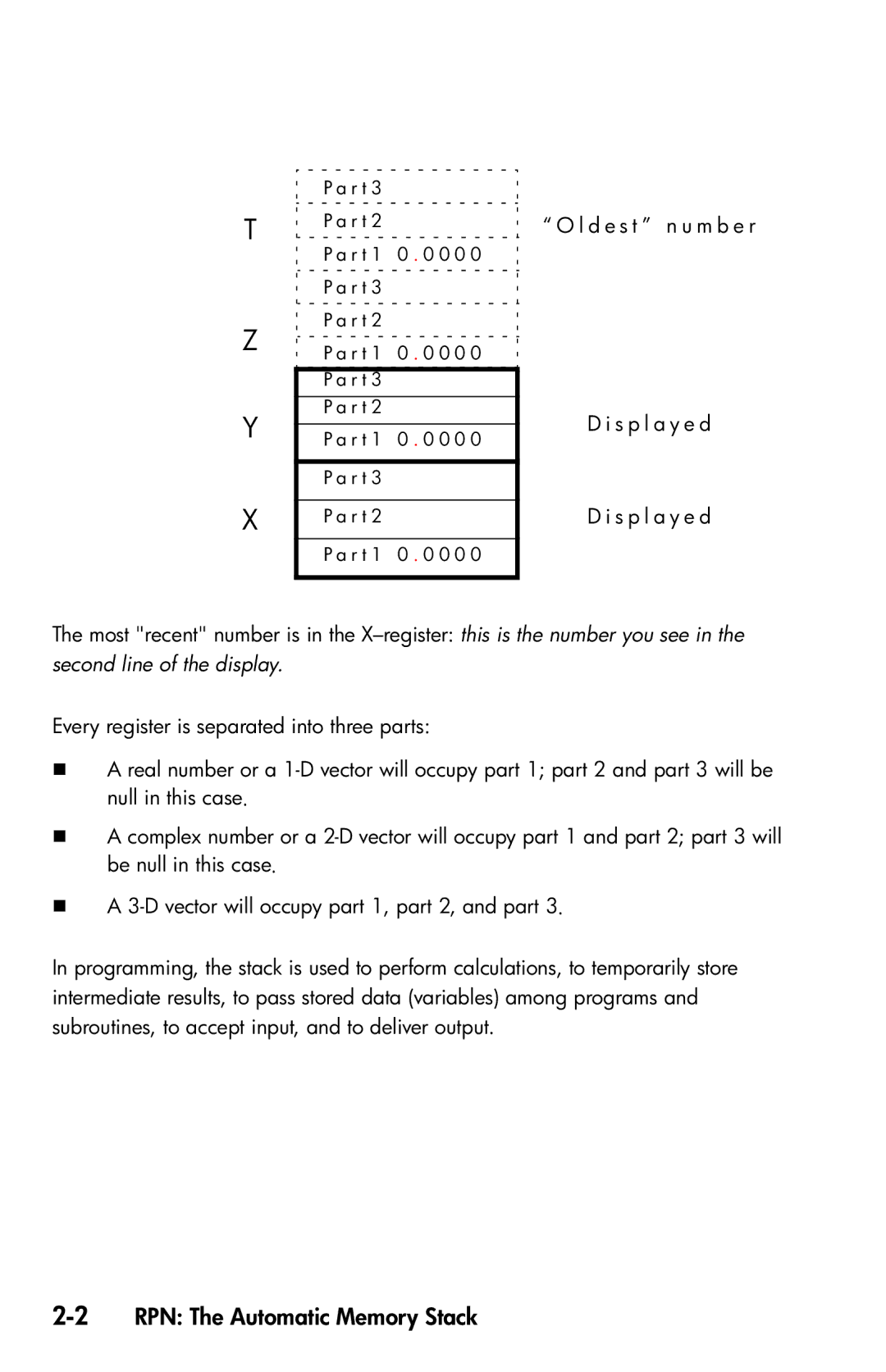
T
Z
Y
X
P a r t 3
P a r t 2
P a r t 1 0 . 0 0 0 0 P a r t 3
P a r t 2
P a r t 1 0 . 0 0 0 0
P a r t 3
P a r t 2
P a r t 1 0 . 0 0 0 0
P a r t 3
P a r t 2
P a r t 1 0 . 0 0 0 0
“ O l d e s t ” n u m b e r
D i s p l a y e d
D i s p l a y e d
The most "recent" number is in the
Every register is separated into three parts:
A real number or a
A complex number or a
A
In programming, the stack is used to perform calculations, to temporarily store intermediate results, to pass stored data (variables) among programs and subroutines, to accept input, and to deliver output.
